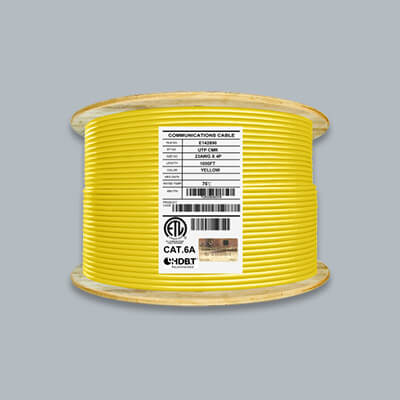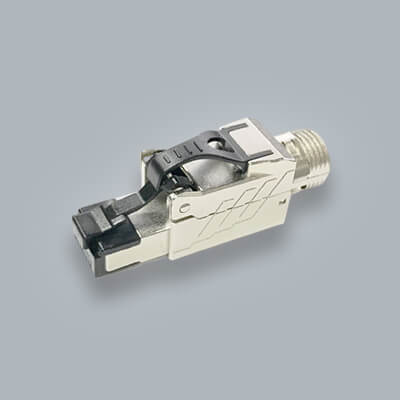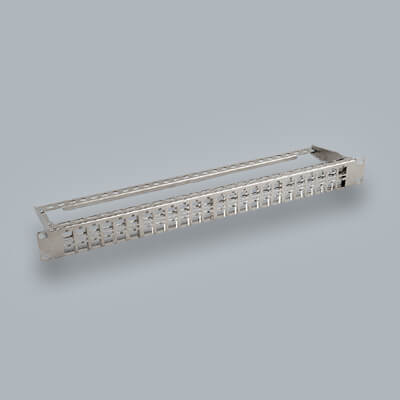FTP vs UTP vs STP

In the world of home networking, selecting the right cable structure is crucial for ensuring seamless connectivity and optimal performance. Among the available options, FTP (Foiled Twisted Pair), UTP (Unshielded Twisted Pair), and STP (Shielded Twisted Pair) cables are popular choices, each with unique characteristics suited to specific needs. Let's explore their structures, price differences, suitability for home environments, and availability across cable categories.
Structure:
-
UTP (Unshielded Twisted Pair): UTP cables consist of insulated copper wires twisted together, offering robust performance while minimizing electromagnetic interference. They are more flexible and easy to install, making them ideal for various home networking scenarios.
-
FTP (Foiled Twisted Pair): FTP cables have an additional layer of foil shielding around the twisted pairs, providing enhanced protection against electromagnetic interference. They are suitable for environments with high interference levels, such as urban areas or industrial settings.
-
STP (Shielded Twisted Pair): STP cables feature individual shielding for each pair of wires and an overall shield surrounding all the pairs. This dual-layer shielding offers maximum protection against interference, making STP cables ideal for demanding environments.
Price Differences:
-
UTP: UTP cables are cost-effective and widely available, making them a popular choice for home networks.
-
FTP: FTP cables are slightly more expensive due to the added shielding but offer increased protection against interference.
-
STP: STP cables come at pricing close to FTP. Giving you added protection over EMI vs UTP.
Best for Home Use:
UTP cables are suitable for most residential networking applications due to their balance of performance and cost-effectiveness. You'll find that most residential locations have limited EMI concerns.
It's also perfectly fine to use a shielded cable type such as FTP in your home. You might want to have the added EMI protection just in case.
Just remember to ensure proper grounding of both the shielded cable and its plugs to maximize effectiveness and prevent potential issues.
Availability Across Cable Categories:
-
UTP and FTP cables are commonly stocked items available across a range of categories including Cat5e, Cat6, and Cat6A, catering to diverse networking needs. In the market, you'll frequently encounter both UTP and FTP (F/UTP) cables. FTP is particularly suited for shielded applications, making it a prevalent choice alongside UTP cables.
-
STP cables, while less common in the market and for bulk cable options, are available in specialized categories optimized for applications demanding maximum interference protection.
Common Questions:
Mixing UTP and STP - Is it Advisable?
Mixing UTP (Unshielded Twisted Pair) and STP (Shielded Twisted Pair) cables in the same network infrastructure is generally not recommended. Mixing cable types can introduce compatibility issues and compromise the effectiveness of shielding against electromagnetic interference. It's best to use either all UTP or all STP cables to maintain consistency and ensure optimal performance throughout the network.
FTP or UTP in Drop Ceiling - Which is Better?
When installing cables in a drop ceiling or any environment prone to electromagnetic interference, using FTP (Foil Twisted Pair) cables is preferable. FTP cables provide enhanced protection against interference, making them well-suited for challenging environments where signal integrity is crucial. However, if interference is minimal or cost considerations are a factor, UTP (Unshielded Twisted Pair) cables are just fine. It really comes down to if there is any EMI concerns in the drop ceiling.
CAT6A FTP or UTP for Home Network - Which Should I Choose?
Choosing between CAT6A FTP (Foil Twisted Pair) and UTP (Unshielded Twisted Pair) cables for a home network depends on various factors. If your home is located in an area with high levels of electromagnetic interference or if you anticipate future upgrades requiring higher bandwidth capabilities, CAT6A FTP cables may be the better option. However, if interference is minimal and cost-effectiveness is a priority, CAT6A UTP cables can provide reliable performance for residential networking needs.
STP vs UTP Keystones: Choosing the Right Fit
When deciding between STP and UTP keystones, it's crucial to consider the specific requirements of your network installation. STP keystones offer superior protection against electromagnetic interference, making them ideal for environments prone to interference or where maximum signal integrity is essential. Conversely, UTP keystones provide a more cost-effective solution suitable for applications where shielding is not a primary concern. Prioritize your network environment and performance needs when selecting the most suitable keystones for your ethernet cabling infrastructure.
In summary, when choosing between FTP, UTP, and STP cables for your home network, consider factors such as interference levels, budget, and installation ease. While UTP cables are suitable for most residential setups, FTP and STP cables offer added protection in environments with high interference levels. By leveraging the available options across cable categories, you can ensure robust connectivity and uninterrupted digital experiences for your home network.





